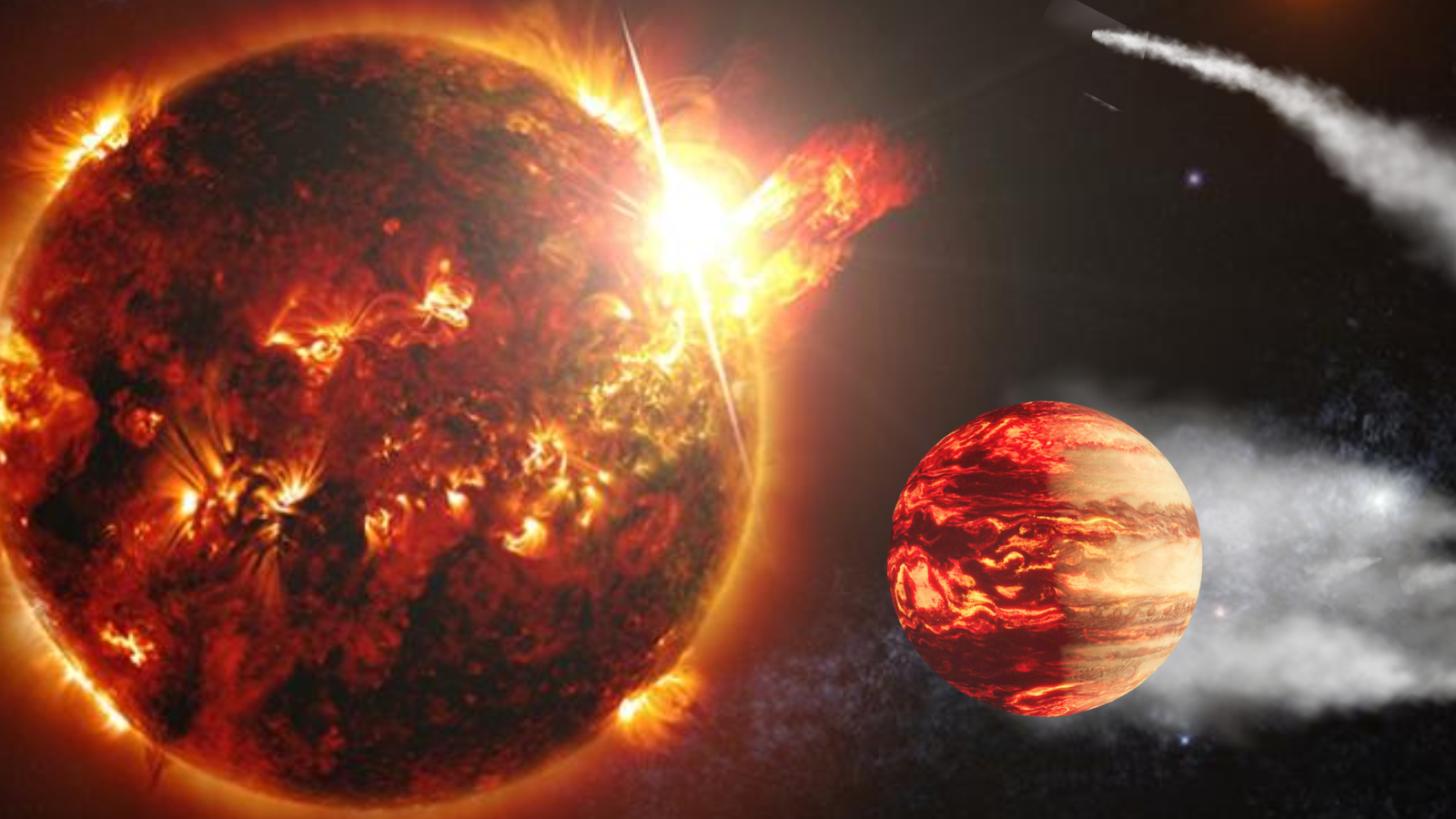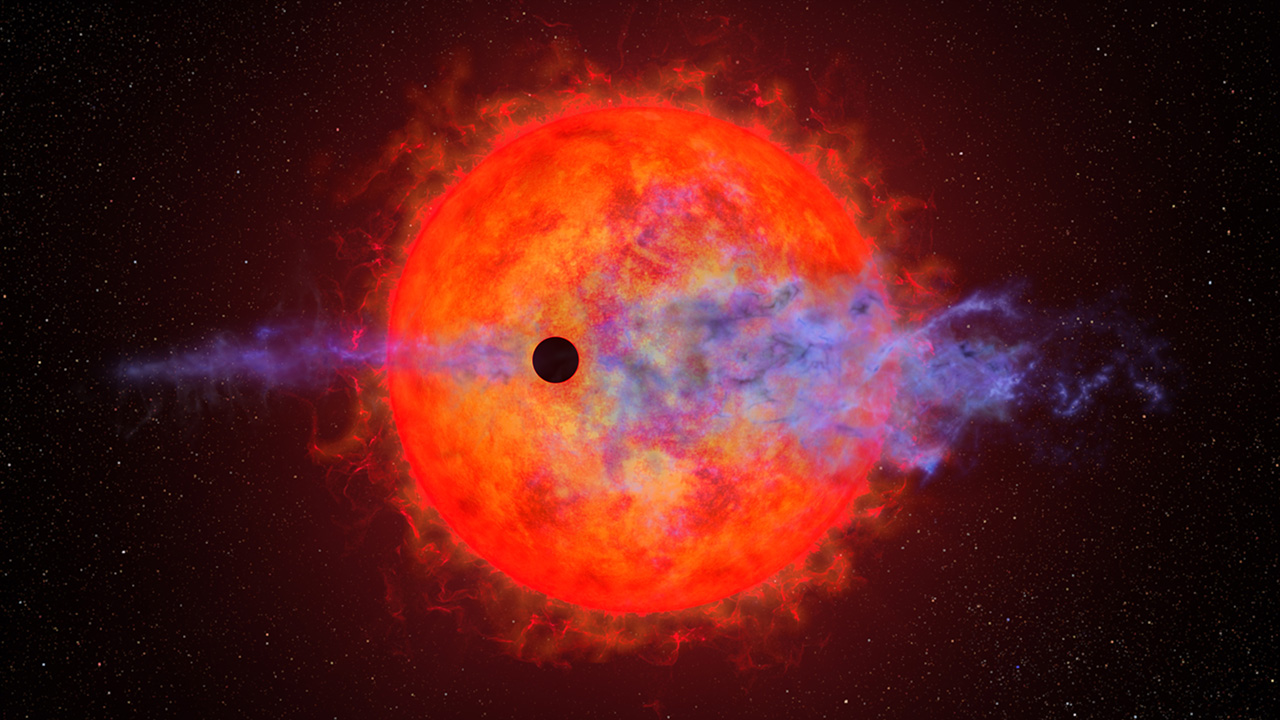Planets of Milky Way's most common stars are less habitable than thought, dead NASA telescope reveals
It's a minefield out there! Especially around stars smaller than the sun.

The most common stars in the Milky Way may be even less friendly to life than previously suspected.
New research suggests that red dwarf stars, stellar bodies smaller and less massive than the sun, may blast their planets with intense ultraviolet (UV) light radiation flares that severely reduce their potential habitability.
A team of scientists reached this conclusion by analyzing data collected by the now-decommissioned NASA mission Galaxy Evolution Explorer (GALEX). Launched in April 2003, GALEX scanned the universe in UV light, hunting for flares from around 300,000 nearby stars until it was shut down in 2013.
That survey reveals that these harmful flares may be more common than suspected, the researchers say. "Few stars have been thought to generate enough UV radiation through flares to impact planet habitability. Our findings show that many more stars may have this capability," team leader and University of Cambridge researcher Vera Berger said in a statement.
The team processed the GALEX archival data using modern computer techniques, leading to all new red dwarf insights.
"Combining modern computer power with gigabytes of decades-old observations allowed us to search for flares on thousands and thousands of nearby stars," team member Michael Tucker from Ohio State University said.
Related: Earth-size planet discovered around cool red dwarf star shares its name with a biscuit
Get the Space.com Newsletter
Breaking space news, the latest updates on rocket launches, skywatching events and more!

Scientists were already aware that there are a number of ways that high-energy light in the form of UV radiation from a star can be deadly to life. These include stripping away a planet's atmosphere and breaking down complex molecules that form the building blocks of biology.
This new research challenges what we know about the habitability of extrasolar planets or "exoplanets" by suggesting that current stellar flare models have downplayed the risk. The team found that far-UV emissions from flares are about three to 12 times as energetic as expected.
"A change of three is the same as the difference in UV in the summer from Anchorage, Alaska to Honolulu, where unprotected skin can get a sunburn in less than 10 minutes," team member Benjamin J. Shappee from the University of Hawaii said.

"This study has changed the picture of the environments around stars less massive than our sun, which emit very little UV light outside of flares," said team member Jason Hinkle, PhD candidate at the University of Hawai’i.
The team isn't currently sure what causes the extra-strong UV flare emissions, but they think they could be concentrated at specific wavelengths of light. Because elements absorb and emit light at characteristic wavelengths, this could indicate the presence of carbon and nitrogen atoms.
Berger said that more space telescope data will be needed before the source of the UV emissions in these red dwarf flares can be identified.
"Our work puts a spotlight on the need for further exploration into the effects of stellar flares on exoplanetary environments," he concluded. "Using space telescopes to obtain UV spectra of stars will be crucial for better understanding the origins of this emission."
The team's research was published in the journal Monthly Notices of the Royal Astronomical Society.
Join our Space Forums to keep talking space on the latest missions, night sky and more! And if you have a news tip, correction or comment, let us know at: community@space.com.

Robert Lea is a science journalist in the U.K. whose articles have been published in Physics World, New Scientist, Astronomy Magazine, All About Space, Newsweek and ZME Science. He also writes about science communication for Elsevier and the European Journal of Physics. Rob holds a bachelor of science degree in physics and astronomy from the U.K.’s Open University. Follow him on Twitter @sciencef1rst.
-
Questioner "...UV radiation ... can ... include stripping away a planet's atmosphere..."Reply
The flare the UV light coincides with would certainly strip away atmospheres,
but how would the fact it is UV frequency make it more likely to strip away atmosphere than any other frequency?
Does breaking down atmospheric molecules make them more subject to stellar 'winds'?








